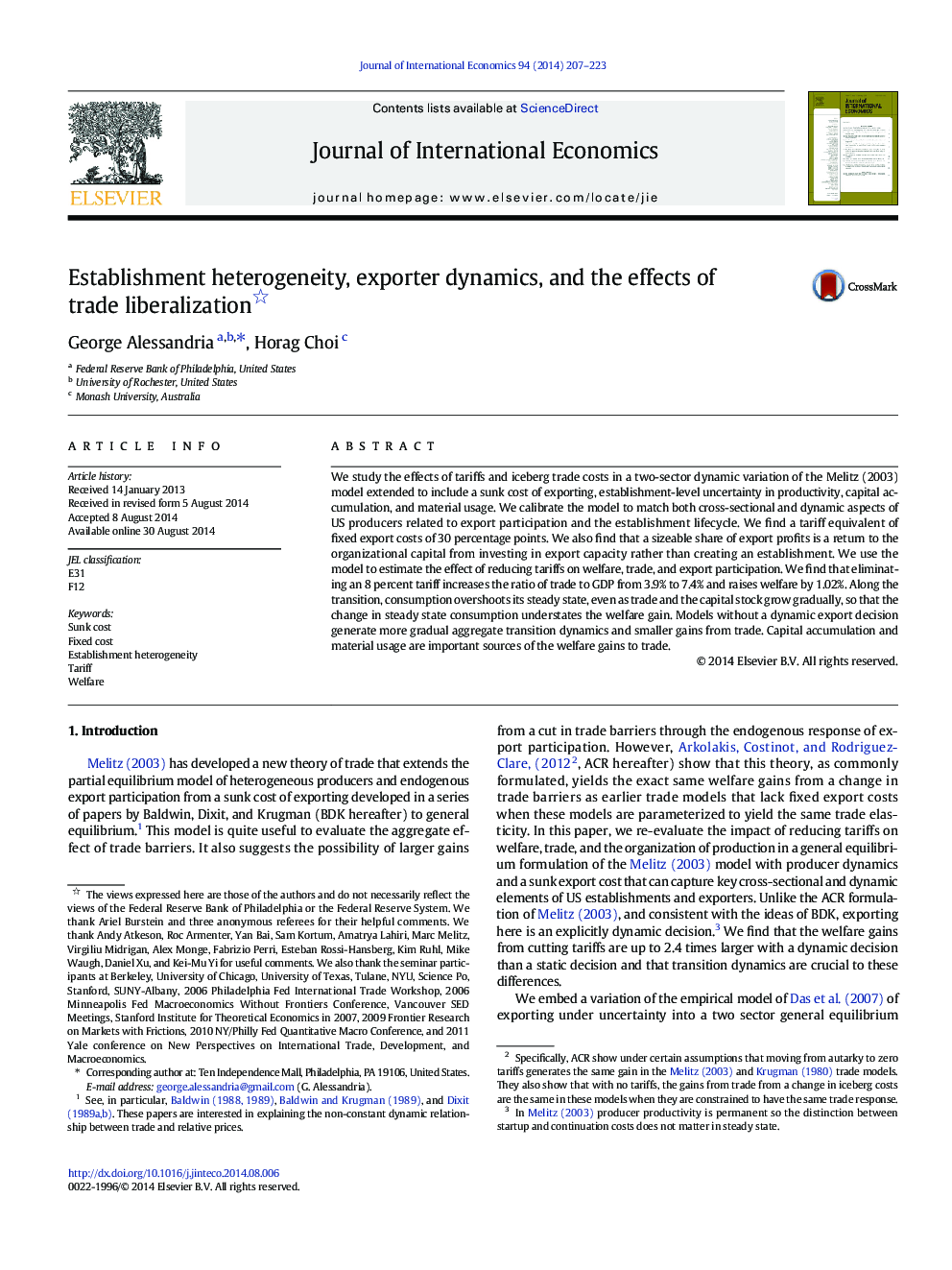| Article ID | Journal | Published Year | Pages | File Type |
|---|---|---|---|---|
| 962947 | Journal of International Economics | 2014 | 17 Pages |
Abstract
We study the effects of tariffs and iceberg trade costs in a two-sector dynamic variation of the Melitz (2003) model extended to include a sunk cost of exporting, establishment-level uncertainty in productivity, capital accumulation, and material usage. We calibrate the model to match both cross-sectional and dynamic aspects of US producers related to export participation and the establishment lifecycle. We find a tariff equivalent of fixed export costs of 30 percentage points. We also find that a sizeable share of export profits is a return to the organizational capital from investing in export capacity rather than creating an establishment. We use the model to estimate the effect of reducing tariffs on welfare, trade, and export participation. We find that eliminating an 8 percent tariff increases the ratio of trade to GDP from 3.9% to 7.4% and raises welfare by 1.02%. Along the transition, consumption overshoots its steady state, even as trade and the capital stock grow gradually, so that the change in steady state consumption understates the welfare gain. Models without a dynamic export decision generate more gradual aggregate transition dynamics and smaller gains from trade. Capital accumulation and material usage are important sources of the welfare gains to trade.
Related Topics
Social Sciences and Humanities
Economics, Econometrics and Finance
Economics and Econometrics
Authors
George Alessandria, Horag Choi,
